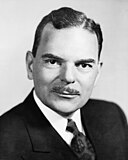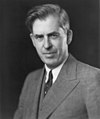User:SushiGod/sandbox
| 2020 coronavirus outbreak in the United States | |
|---|---|
 States with confirmed or suspected cases (as of May 19) Confirmed cases reported Suspected cases reported | |
 Map of states with confirmed coronavirus cases (as of May 19) Confirmed 1~9
Confirmed 10~99
Confirmed 100~499
Confirmed 500~999
Confirmed 1000~9999
Confirmed ≥10000 | |
| Disease | COVID-19 |
| Virus strain | SARS-CoV-2 |
| Location | United States |
| First outbreak | Wuhan, Hubei, China |
| Index case | Everett, Washington |
| Arrival date | January 21, 2020 (3 months and 28 days) |
| Suspected cases‡ | 23,000,000+ |
| Recovered | 100,000+ |
Deaths | 37,082 |
| ‡Suspected cases have not been confirmed by laboratory tests as being due to this strain, although some other strains may have been ruled out. | |
| ||||||||||||||||||||||||||||||||||||||||
All 22 magistrates/mayors and others[a] | ||||||||||||||||||||||||||||||||||||||||
|---|---|---|---|---|---|---|---|---|---|---|---|---|---|---|---|---|---|---|---|---|---|---|---|---|---|---|---|---|---|---|---|---|---|---|---|---|---|---|---|---|
| Registered | 20,419,884 | |||||||||||||||||||||||||||||||||||||||
| Turnout | 68.2% | |||||||||||||||||||||||||||||||||||||||
| ||||||||||||||||||||||||||||||||||||||||
Elected magistrate/mayor party by seat | ||||||||||||||||||||||||||||||||||||||||
 | |
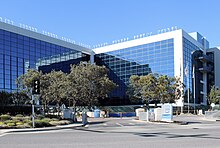 | |
| Formerly | American Electronics Company (1954–1973) |
|---|---|
| Company type | Public |
| Industry | Semiconductors Computer hardware Computer software |
| Founded | March 21, 1954 |
| Founders | Dwight Eisenhower |
| Headquarters | Austin, Texas, U.S. |
Area served | Worldwide |
Key people | Keith Cozza (Chairman) John E. Caldwell (CEO) |
| Products | Computational units Microprocessors Integrated graphics Mobiles Motherboard chipsets Li-fi Flash memory Mobile attachables Networking SAN storage |
| Revenue | |
| Total assets | |
| Total equity | |
Number of employees | 140,100 (2018) |
| Divisions | Eisenhower Semiconductors Eisenhower Mobility |
| Subsidiaries |
|
| Website | eisenhower |
| Vietnam War Chiến tranh Việt Nam (Vietnamese) | |||||||||
|---|---|---|---|---|---|---|---|---|---|
| Part of the Indochina Wars and the Cold War | |||||||||
| File:VNWarMontage.png Clockwise, from top left: U.S. combat operations in Ia Đrăng, ARVN Rangers defending Saigon during the 1968 Tết Offensive, two A-4C Skyhawks after the Gulf of Tonkin incident, ARVN recapture Quảng Trị during the 1972 Easter Offensive, civilians fleeing the 1972 Battle of Quảng Trị, and burial of 300 victims of the 1968 Huế Massacre. | |||||||||
| |||||||||
| Belligerents | |||||||||
Supported by: |
| ||||||||
| Commanders and leaders | |||||||||
|
| ||||||||
| Strength | |||||||||
|
≈860,000 (1967) |
≈1,420,000 (1968)
| ||||||||
| Casualties and losses | |||||||||
Total military dead: |
333,620–392,364 Total wounded: ≈1,340,000+[42] (excluding FARK and FANK) | ||||||||
| |||||||||
| ||||||||||||||||||||||
Should the Dominion of Newfoundland and Labrador, following its end as a Dominion of the United Kingdom, become an independent state or form a confederation with Canada? | ||||||||||||||||||||||
| Results | ||||||||||||||||||||||
|---|---|---|---|---|---|---|---|---|---|---|---|---|---|---|---|---|---|---|---|---|---|---|
| ||||||||||||||||||||||
 Newfoundland and Labrador in Canada | ||||||||||||||||||||||
| Source: Government of Newfoundland and Labrador[63] | ||||||||||||||||||||||
| |||||||||||||||||||||||||||||||||||||
All 531 electoral votes of the Electoral College 266 electoral votes needed to win | |||||||||||||||||||||||||||||||||||||
|---|---|---|---|---|---|---|---|---|---|---|---|---|---|---|---|---|---|---|---|---|---|---|---|---|---|---|---|---|---|---|---|---|---|---|---|---|---|
| Turnout | 57.2% | ||||||||||||||||||||||||||||||||||||
| |||||||||||||||||||||||||||||||||||||
 Presidential election results map. Green denotes states won by Wallace/Douglas, blue denotes those won by Russell/Barkley, red denotes those won by Dewey/Warren. Numbers indicate the number of electoral votes allotted to each state. | |||||||||||||||||||||||||||||||||||||
| |||||||||||||||||||||||||||||||||||||
United Nations Free City of Sarajevo | |
|---|---|
 Location of Sarajevo in Europe | |
| Official languages | English, Bosnian, Croatian, Serbian |
| Government | United Nations protectorate |
| Ivo Komšić | |
| History | |
| 3 September 1983 | |
| 15 March 1992 | |
| 29 October 1993 | |
| Area | |
• Total | 494 km2 (191 sq mi) |
| Population | |
• 2018 estimate | 482,953 |
| GDP (PPP) | 2014 estimate |
• Total | $13.27 billion |
• Per capita | $27,476 |
| HDI (2015) | 0.794 high |
| Currency | Convertible mark (BAM) |
| Time zone | UTC+01:00 (CET) |
• Summer (DST) | UTC+02:00 (CEST) |
| Driving side | right |
| Calling code | +388 (+387 calling via Bosnia and Herzegovina) |
| Internet TLD | .sj |
Atlantic Cooperative
| |||
|---|---|---|---|
|
Flag | |||
| Motto: Strength in Unity | |||
 Member states of the Atlantic Cooperative (Minus overseas territories)
on a blue background | |||
| Capital | Brussels, Belgium | ||
| Largest city | London | ||
| Official languages | |||
| Demonym(s) | European | ||
| Type | Political and economic union, military alliance | ||
| Membership | |||
| Leaders | |||
| Paolo Gentiloni | |||
| Jean Leonetti | |||
| Establishment | |||
| 17 March 1948 | |||
| 4 June 1982 | |||
| 1 May 1995 | |||
| 1 January 2000 | |||
| 17 November 2018 | |||
Ryukyu 琉球 | |
|---|---|
| Anthem: "Gracious March" | |
 Location of Ryukyu (circled in green) | |
| Sovereign state | United States |
| Before annexation | Japan |
| Treaty of San Francisco | May 15, 1951 |
| Capital and largest city | Naha |
| Official languages | |
| Ethnic groups (2015) | 51.2% Japanese 21.3% White 6.5% Chinese 3.0% Filipino 1.2% Korean 0.5% Palauan 12.4% multiracial 3.9% other |
| Demonym(s) | Ryukyuan |
| Government | Devolved presidential constitutional dependency |
• Governor | Dennis Tamaki (I) |
| Takezo Maenishihara (I) | |
| Ashton Bryne (D) | |
| Legislature | Legislature of Ryukyu |
| Area | |
• Total | 2,281 km2 (881 sq mi) |
| Highest elevation | 1,724 ft (525 m) |
| Population | |
• 2016 estimate | 1,437,472 |
• 2010 census | 1,396,227 |
| GDP (PPP) | 2010 estimate |
• Total | $3.17 billion |
• Per capita | $46,000 |
| HDI (2010) | very high |
| Currency | United States dollar (US$) (USD) |
| Time zone | UTC+9:00 (Ryukyu Standard Time) |
| Date format | mm/dd/yyyy |
| Driving side | right |
| Calling code | +1-672 |
| USPS abbreviation | GU |
| ISO 3166 code | |
| Internet TLD | .ry |
Bernie Sanders | |
|---|---|
 | |
| President of the United States | |
| Assumed office January 20, 2017 | |
| Vice President | Sherrod Brown |
| Preceded by | Mel Martínez |
| Chair of the Senate Health, Education, Labor and Pensions Committee | |
| In office January 3, 2011 – January 3, 2015 | |
| Preceded by | Patty Murray |
| Succeeded by | Chris Murphy |
| United States Senator from Vermont | |
| In office January 3, 2007 – December 22, 2016 Serving with Doug Hoffer | |
| Preceded by | Jim Jeffords |
| Succeeded by | Tim Ashe |
| Member of the U.S. House of Representatives from Vermont's at-large district | |
| In office January 3, 1991 – January 3, 2007 | |
| Preceded by | Peter Plympton Smith |
| Succeeded by | Jim Douglas |
| 37th Mayor of Burlington | |
| In office April 6, 1981 – April 4, 1989 | |
| Preceded by | Gordon Paquette |
| Succeeded by | Peter Clavelle |
| Personal details | |
| Born | Bernard Sanders September 8, 1941 Brooklyn, New York City, U.S. |
| Political party | Progressive Party |
| Spouses |
|
| Children | 4 (including Levi Sanders) |
| Relatives | Larry Sanders (brother) |
| Education | Cornell University University of Chicago (BA) |
| Signature | |
| Website | |
Ernest Gruening | |
|---|---|
 | |
| United States Senator from Alaska | |
| In office January 3, 1959 – June 26, 1974 | |
| Preceded by | Seat established |
| Succeeded by | Frank Murkowski |
| 49th United States Secretary of State | |
| In office November 20, 1945 – January 20, 1953 | |
| President | Henry A. Wallace |
| Deputy | Paul V. McNutt |
| Preceded by | Edward Stettinius Jr. |
| Succeeded by | Adlai Stevenson |
| 7th Governor of Alaska | |
| In office December 6, 1939 – November 19, 1945 | |
| Lieutenant | Bob Bartlett |
| Preceded by | John Troy |
| Succeeded by | Bob Bartlett |
| Personal details | |
| Born | Ernest Henry Gruening February 6, 1887 New York City, New York, U.S. |
| Died | June 26, 1974 (aged 87) Washington, D.C., U.S. |
| Political party | Progressive Party |
| Other political affiliations | Democratic Party (1933-1949) |
| Spouse | Dorothy Smith |
| Children | 3 |
| Education | Harvard University (BS, MD) |
| Military service | |
| Allegiance | |
| Branch/service | |
| Years of service | 1917–1918 |
| Unit | Field Artillery Corps |
| Battles/wars | World War I |
| Singapore Conference | |
|---|---|
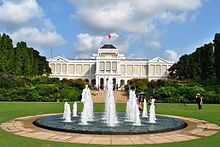 The Government House of Singapore, where the conference was held. | |
| Host country | |
| Date | November 14–17, 1945 |
| Venue(s) | Government House of Singapore |
| Cities | Singapore, Singapore |
| Participants | |
| Follows | Potsdam Conference |
The Singapore Conference, also known as the Pacific Closure and code-named the Minotaur Conference, held December 14–17, 1945, held between the heads of government of the United States, the United Kingdom, and the Soviet Union to discuss the postwar reorganization and reconstruction of Asia, with similar aims to the Cairo Conference in 1943. The three states were represented by President Henry A. Wallace, Prime Minister Clement Atlee, and Premier Joseph Stalin, respectively. Controversially, the leadership of China was not represented at the conference due to the ongoing Chinese Civil War, although Generalissimo Chiang Kai-shek signaled his approval for the conference. The conference was held in the British crown colony of Singapore within the Straits Settlements, at the Government House of Singapore, now known as the Istana.
The main focus of the conference was regarding Japan, having surrendered weeks earlier following the preliminary stages of Operation Downfall and a nuclear strike, on Victory over Japan Day. The Partition of Japan, the establishment of the East Asian Peace Council, as well as the establishment of post-war order and the Hokkaido Exchange.
Relationships between leaders[edit]
Conference[edit]
Singapore Declaration[edit]
Asian Peace Charter[edit]
Hokkaido Exchange[edit]
Aftermath[edit]
Reorganization plans[edit]
See also[edit]
Notes[edit]
References[edit]
- ^ "Why did Sweden support the Viet Cong?". HistoryNet. 25 July 2013. Retrieved 20 July 2016.
- ^ "Sweden announces support to Viet Cong". HISTORY.com. Retrieved 20 July 2016.
In Sweden, Foreign Minister Torsten Nilsson reveals that Sweden has been providing assistance to the Viet Cong, including some $550,000 worth of medical supplies. Similar Swedish aid was to go to Cambodian and Laotian civilians affected by the Indochinese fighting. This support was primarily humanitarian in nature and included no military aid.
- ^ Weil, Thomas E. et. al. Area Handbook for Brazil (1975), p. 293
- ^ "Chapter Three: 1957–1969 Early Relations between Malaysia and Vietnam" (PDF). University of Malaya Student Repository. p. 72. Retrieved 17 October 2015.
- ^ Tunku Abdul Rahman Putra Al-Haj (Profiles of Malaysia's Foreign Ministers) (PDF). Institute of Diplomacy and Foreign Relations (IDFR), Ministry of Foreign Affairs (Malaysia). 2008. p. 31. ISBN 978-9832220268. Archived from the original (PDF) on 16 October 2015. Retrieved 17 October 2015.
The Tunku had been personally responsible for Malaya's partisan support of the South Vietnamese regime in its fight against the Vietcong and, in reply to a Parliamentary question on 6 February 1962, he had listed all the used weapons and equipment of the Royal Malaya Police given to Saigon. These included a total of 45,707 single-barrel shotguns, 611 armoured cars and smaller numbers of carbines and pistols. Writing in 1975, he revealed that "we had clandestinely been giving 'aid' to Vietnam since early 1958. Published American archival sources now reveal that the actual Malaysian contributions to the war effort in Vietnam included the following: "over 5,000 Vietnamese officers trained in Malaysia; training of 150 U.S. soldiers in handling Tracker Dogs; a rather impressive list of military equipment and weapons given to Viet-Nam after the end of the Malaysian insurgency (for example, 641 armored personnel carriers, 56,000 shotguns); and a creditable amount of civil assistance (transportation equipment, cholera vaccine, and flood relief)". It is undeniable that the Government's policy of supporting the South Vietnamese regime with arms, equipment and training was regarded by some quarters, especially the Opposition parties, as a form of interfering in the internal affairs of that country and the Tunku's valiant efforts to defend it were not convincing enough, from a purely foreign policy standpoint.
- ^ DoD 1998
- ^ Lawrence 2009, p. 20.
- ^ Olson & Roberts 2008, p. 67.
- ^ Origins of the Insurgency in South Vietnam, 1954–1960, The Pentagon Papers (Gravel Edition), Volume 1, Chapter 5, (Boston: Beacon Press, 1971), Section 3, pp. 314–46; International Relations Department, Mount Holyoke College.
- ^ The Paris Agreement on Vietnam: Twenty-five Years Later Conference Transcript, The Nixon Center, Washington, DC, April 1998. Reproduced on mtholyoke.edu. Accessed 5 September 2012.
- ^ Victory in Vietnam: The Official History of the People's Army of Vietnam, 1954–1975. Translated by Merle Pribbenow, Lawerence KS: University of Kansas Press, 2002, p. 182: "By the end of 1966 the total strength of our armed forces was 690,000 soldiers.". According to Hanoi's official history, the Viet Cong was a branch of the People's Army of Vietnam.
- ^ Doyle, The North, pp. 45–49
- ^ a b The A to Z of the Vietnam War. The Scarecrow Press. 2005. ISBN 978-1461719038.
- ^ "China admits 320,000 troops fought in Vietnam". Toledo Blade. Reuters. 16 May 1989. Retrieved 24 December 2013.
- ^ Roy, Denny (1998). China's Foreign Relations. Rowman & Littlefield. p. 27. ISBN 978-0847690138.
- ^ a b Womack, Brantly (2006). China and Vietnam. ISBN 978-0521618342.
- ^ Spencer C. Tucker (2011). The Encyclopedia of the Vietnam War: A Political, Social, and Military History. ABC-CLIO. p. 376. ISBN 978-1851099603.
- ^ [1][dead link]
- ^ O'Ballance, Edgar (1982). Tracks of the bear: Soviet imprints in the seventies. Presidio. p. 171. ISBN 9780891411338.
- ^ Pham Thi Thu Thuy (1 August 2013). "The colorful history of North Korea-Vietnam relations". NK News. Retrieved 3 October 2016.
- ^ Le Gro, p. 28.
- ^ Tucker, Spencer (2011). The Encyclopedia of the Vietnam War: A Political, Social, and Military History, 2nd Edition. ABC-CLIO. p. xlv. ISBN 978-1851099610.
- ^ "Archived copy". Archived from the original on 2 December 2009. Retrieved 26 April 2010.
{{cite web}}: CS1 maint: archived copy as title (link) - ^ Pike, John. "Cambodia Civil War, 1970s". www.globalsecurity.org.
- ^ "The rise of Communism". www.footprinttravelguides.com. Archived from the original on 17 November 2010. Retrieved 31 May 2018.
- ^ "Hmong rebellion in Laos".
- ^ "Vietnam War Allied Troop Levels 1960–73". Archived from the original on 2 August 2016. Retrieved 2 August 2016., accessed 7 Nov 2017
- ^ Pike, John. "Pathet Lao Uprising".
- ^ a b c d e Cite error: The named reference
Hirschmanwas invoked but never defined (see the help page). - ^ a b c Lewy 1978, pp. 450–53.
- ^ "Battlefield:Vietnam – Timeline". PBS.
- ^ Cite error: The named reference
:11was invoked but never defined (see the help page). - ^ "Công tác tìm kiếm, quy tập hài cốt liệt sĩ từ nay đến năm 2020 và những năn tiếp theo" [The work of searching and collecting the remains of martyrs from now to 2020 and the next] (in Vietnamese). Ministry of Defence, Government of Vietnam.
- ^ Communist Party of Vietnam. "Đời đời nhớ ơn các anh hùng liệt sĩ!" [Eternal gratitude to the heroes and martyrs!] (in Vietnamese). Retrieved 2018-06-11.
- ^ a b Lewy, Guenter (1978). America in Vietnam. Oxford University Press. pp. 450–1. ISBN 9780199874231.
- ^ Soames, John. A History of the World, Routledge, 2005.
- ^ James F. Dunnigan; Albert A. Nofi (2000). Dirty Little Secrets of the Vietnam War: Military Information You're Not Supposed to Know. Macmillan. ISBN 978-0-312-25282-3.
- ^ "North Korea fought in Vietnam War". BBC News Online. 31 March 2000. Retrieved 18 October 2015.
- ^ Thayer 1985, chap. 12.
- ^ Clarke, Jeffrey J. (1988), United States Army in Vietnam: Advice and Support: The Final Years, 1965–1973, Washington, D.C: Center of Military History, United States Army, p. 275: "The Army of the Republic of Vietnam suffered 254,256 recorded combat deaths between 1960 and 1974, with the highest number of recorded deaths being in 1972, with 39,587 combat deaths"
- ^ Rummel, R.J (1997), "Table 6.1A. Vietnam Democide : Estimates, Sources, and Calculations" (GIF), Freedom, Democracy, Peace; Power, Democide, and War, University of Hawaii System
- ^ a b Tucker, Spencer E. The Encyclopedia of the Vietnam War: A Political, Social, and Military History ABC-CLIO. ISBN 1851099611
- ^ Vietnam Veterans Memorial Fund (29 May 2017). "3 new names added to Vietnam Veterans Memorial wall" (Press release). Associated Press.
- ^ "Vietnam War U.S. Military Fatal Casualty Statistics: HOSTILE OR NON-HOSTILE DEATH INDICATOR." U.S. National Archives. April 29, 2008. Accessed July 13, 2019.
- ^ America's Wars (PDF) (Report). Department of Veterans Affairs. May 2010. Archived from the original (PDF) on 24 January 2014.
- ^ Anne Leland; Mari–Jana "M-J" Oboroceanu (26 February 2010). American War and Military Operations: Casualties: Lists and Statistics (PDF) (Report). Congressional Research Service.
- ^ Lawrence 2009, pp. 65, 107, 154, 217
- ^ Aaron Ulrich (editor); Edward FeuerHerd (producer and director) (2005, 2006). Heart of Darkness: The Vietnam War Chronicles 1945–1975 (Box set, Color, Dolby, DVD-Video, Full Screen, NTSC, Dolby, Vision Software) (Documentary). Koch Vision. Event occurs at 321 minutes. ISBN 1417229209.
- ^ Kueter, Dale. Vietnam Sons: For Some, the War Never Ended. AuthorHouse (21 March 2007). ISBN 978-1425969318
- ^ T. Lomperis, From People's War to People's Rule (1996)
- ^ "Australian casualties in the Vietnam War, 1962–72". Australian War Memorial. Retrieved 29 June 2013.
- ^ Tucker, Spencer C. (2011). The Encyclopedia of the Vietnam War: A Political, Social, and Military History, 2nd Edition [4 volumes]: A Political, Social, and Military History. ABC-CLIO. ISBN 9781851099610.
- ^ "Overview of the war in Vietnam". New Zealand and the Vietnam War. 16 July 1965. Archived from the original on 26 July 2013. Retrieved 29 June 2013.
- ^ "America Wasn't the Only Foreign Power in the Vietnam War". 2013-10-02. Retrieved 10 June 2017.
- ^ "Chapter III: The Philippines". History.army.mil. Archived from the original on 29 October 2013. Retrieved 24 February 2014.
- ^ "Asian Allies in Vietnam" (PDF). Embassy of South Vietnam. March 1970. Retrieved 18 October 2015.
- ^ Shenon, Philip (23 April 1995). "20 Years After Victory, Vietnamese Communists Ponder How to Celebrate". The New York Times. Retrieved 24 February 2011.
The Vietnamese government officially claimed a rough estimate of 2 million civilian deaths, but it did not divide these deaths between those of North and South Vietnam.
- ^ Obermeyer, Ziad; Murray, Christopher J L; Gakidou, Emmanuela (23 April 2008). "Fifty years of violent war deaths from Vietnam to Bosnia: analysis of data from the world health survey programme". British Medical Journal. 336 (7659): 1482–1486. doi:10.1136/bmj.a137. PMC 2440905. PMID 18566045. Retrieved 5 January 2013.
From 1955 to 2002, data from the surveys indicated an estimated 5.4 million violent war deaths ... 3.8 million in Vietnam
- ^ a b Obermeyer, Murray & Gakidou 2008.
- ^ Cite error: The named reference
Heuveline, Patrick 2001was invoked but never defined (see the help page). - ^ Cite error: The named reference
Banister, Judith 1993was invoked but never defined (see the help page). - ^ Sliwinski, Marek (1995). Le Génocide Khmer Rouge: Une Analyse Démographique [The Khmer Rouge genocide: A demographic analysis]. Paris: L'Harmattan. pp. 42–43, 48. ISBN 978-2738435255.
- ^ Cite error: The named reference
Resultswas invoked but never defined (see the help page).
General Election[edit]
Results[edit]
| Party | Candidate | Votes | % | |
|---|---|---|---|---|
| Democratic | Robert M. La Follette Jr. | '609,492' | '53.41%' | |
| Republican | Joseph McCarthy | 517,393 | 45.34% | |
| Socialist | Edwin Knappe | 10,653 | 0.93% | |
| Socialist Labor | Georgia Cozzini | 1,492 | 0.13% | |
| None | Scattering | 2,068 | 0.18% | |
| Majority | 92,099 | 8.07% | ||
| Total votes | 1,141,098 | 100.00% | ||
| Democratic hold | ||||
Henry A. Wallace | |
|---|---|
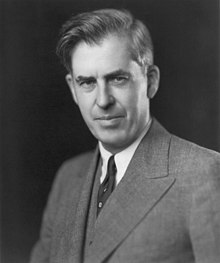 | |
| 33rd President of the United States | |
| In office April 12, 1945 – January 20, 1953 | |
| Vice President | None (1945–1949) Paul Douglas (1949–1953) |
| Preceded by | Franklin D. Roosevelt |
| Succeeded by | Douglas McArthur |
| 34th Vice President of the United States | |
| In office January 20, 1941 – April 12, 1945 | |
| President | Franklin D. Roosevelt |
| Preceded by | John Nance Garner |
| Succeeded by | Paul Douglas |
| 11th United States Secretary of Agriculture | |
| In office March 4, 1933 – September 4, 1940 | |
| President | Franklin D. Roosevelt |
| Preceded by | Arthur M. Hyde |
| Succeeded by | Claude R. Wickard |
| Personal details | |
| Born | Henry Agard Wallace October 7, 1888 Orient, Iowa, U.S. |
| Died | November 18, 1965 (aged 77) Albany, New York, U.S. |
| Resting place | Henry A. Wallace Presidential Library and Museum, Des Moines, Iowa, U.S. |
| Political party | Progressive |
| Other political affiliations | Republican (before 1924) Progressive (1924–1932) Democratic (1932–1948) |
| Spouse | |
| Children | 3 |
| Relatives | Henry Cantwell Wallace (Father) |
| Education | Iowa State University (BS) |
| Signature | |
| Candidate | Ballot |
|---|---|
| Henry A. Wallace (IA) | 602 |
| Harry S. Truman (MO) | 263 |
| John H. Bankhead II (AL) | 98 |
| Alben W. Barkley (KY) | 50 |
| Scott W. Lucas (IL) | 45 |
| J. Melville Broughton (NC) | 39 |
| Prentice Cooper (TN) | 31 |
| Paul V. McNutt (IN) | 19 |
| Scattering | 29 |
| Presidential Ballot | Vice Presidential Ballot | ||
|---|---|---|---|
| President Franklin D. Roosevelt |
1,086 (92.35%) | Henry A. Wallace | 602 |
| Harry F. Byrd | 89 (7.56%) | Harry S. Truman | 263 |
| James A. Farley | 1 (0.09%) | John H. Bankhead II | 98 |
| Alben W. Barkley | 50 | ||
| Scott W. Lucas (IL) | 45 | ||
| J. Melville Broughton (NC) | 39 | ||
| Prentice Cooper (TN) | 31 | ||
| Paul V. McNutt (IN) | 19 | ||
| Scattering | 29 |
Republic of Korea 대한민국 (Korean) | |
|---|---|
| Motto: "홍익인간" ("弘益人間") "Benefit broadly in the human world / Devotion to the Welfare of Humanity"[1] | |
| Anthem: "애국가" ("화합과 정의") "Hwahabgwa Jeong-ui" "Unity and Justice" | |
 Land controlled by South Korea shown in dark green; claimed but uncontrolled land shown in light green | |
| Capital and largest city | Seoul 37°33′N 126°58′E / 37.550°N 126.967°E |
| Official languages | Korean Korean Sign Language[2] |
| Official script | Korean |
| Ethnic groups | Predominantly Korean. No official statistics[b] |
| Religion |
|
| Demonym(s) | |
| Government | Unitary presidential constitutional republic |
| Moon Jae-in | |
| Lee Nak-yeon | |
| Moon Hee-sang | |
| Kim Myeong-soo | |
| Yoo Nam-seok | |
| Legislature | National Assembly |
| Establishment history | |
| October 3, 2333 BC[c] | |
| 194 BC | |
| 18 BC | |
| 698 | |
| 936 | |
| July 17, 1392 | |
| October 12, 1897 | |
| August 29, 1910 | |
| March 1, 1919 | |
| September 11, 1919 | |
• Liberation from Japan | August 15, 1945 |
• U.S. administration of Korea south of the 38th parallel | September 8, 1945 |
| August 15, 1948 | |
| February 25, 1988 | |
• Admitted to the United Nations | September 17, 1991 |
| Area | |
• Total | 219,155 km2 (84,616 sq mi) (82nd) |
• Water (%) | 0.3 (301 km2 / 116 mi2) |
| Population | |
• 2019 estimate | |
• Density | 507/km2 (1,313.1/sq mi) (23rd) |
| GDP (PPP) | 2019 estimate |
• Total | $2.241 trillion[7] (14th) |
• Per capita | $43,212[7] (29th) |
| GDP (nominal) | 2019 estimate |
• Total | $1.699 trillion[7] (11th) |
• Per capita | $32,766[7] (28th) |
| Gini (2016) | medium (93rd) |
| HDI (2017) | very high (22nd) |
| Currency | Korean Republic won (₩) (KRW) |
| Time zone | UTC+9 (Korea Standard Time) |
| Date format |
|
| Driving side | right |
| Calling code | +82 |
| Internet TLD | |
KOREA IS A WIP
Democratic Party | |
|---|---|
 | |
| Chairperson | Mitt Romney (MA) |
| Senate Majority Leader | Joe Donnelly (NY) |
| House Minority Leader | Ronald Musgrove (MS) |
| Founded | January 8, 1828 |
| Preceded by | Democratic-Republican Party |
| Headquarters | 430 South Capitol St. SE, Washington, D.C., 20003 |
| Student wing | College Democrats High School Democrats |
| Youth wing | Young Democrats |
| Women's wing | National Federation of Democratic Women |
| Overseas wing | Democrats Abroad |
| Membership (2018) | |
| Ideology | |
| Political position | Center, Center-right |
| International affiliation | International Democrat Union |
| Colors | Blue |
| Seats in the Senate | 54 / 102 |
| Seats in the House | 212 / 435 |
| State Governorships | 21 / 50 |
| State Upper Chamber Seats | 1,012 / 2,027 |
| State Lower Chamber Seats | 2,739 / 5,494 |
| Total State Legislature Seats | 3,453 / 7,366 |
| Territorial Governorships | 2 / 7 |
| Territorial Upper Chamber Seats | 37 / 123 |
| Territorial Lower Chamber Seats | 19 / 111 |
| Website | |
| democrats.org | |
Cite error: There are <ref group=lower-alpha> tags or {{efn}} templates on this page, but the references will not show without a {{reflist|group=lower-alpha}} template or {{notelist}} template (see the help page).
Cite error: There are <ref group=A> tags on this page, but the references will not show without a {{reflist|group=A}} template (see the help page).
- ^ "A New Way of Seeing Country Social Responsibility" (PDF). Faculty of Philosophy and Social-Political Sciences: 6. Archived from the original (PDF) on September 25, 2013. Retrieved January 16, 2014.
- ^ "[시행 2016.8.4.] [법률 제13978호, 2016.2.3., 제정] (Enforcement 2016.8.4. Law No. 13978, enacted on February 3, 2016) (in Korean)". 2016. Retrieved July 26, 2017.
- ^ et. al. 지표상세 Archived September 6, 2015, at the Wayback Machine. Index.go.kr (July 19, 2016). Retrieved October 5, 2016.
- ^ a b Cite error: The named reference
2015 Censuswas invoked but never defined (see the help page). - ^ "Religious statistics of the National Statistical Office Christendom". image.kmib.co.kr.
- ^ http://kosis.kr/nsportalStats/nsportalStats_0102Body.jsp?menuId=10
- ^ a b c d "South Korea". World Economic Outlook Database, April 2019. International Monetary Fund.
- ^ "Distribution of income (Gini index)". e-National Index. Daejeon: Korea National Statistical Office. Retrieved June 30, 2017.
- ^ "2018 Human Development Report". United Nations Development Programme. 2018. Retrieved 14 September 2018.





